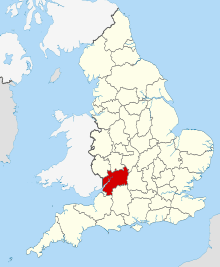Hailes Abbey
 | |
| Monastery information | |
|---|---|
| Order | Cistercian |
| Established | 1246 |
| Disestablished | Christmas Eve 1539 |
| Mother house | Beaulieu Abbey |
| People | |
| Founder(s) | Richard, Earl of Cornwall |
| Abbot | First Jordan of Beaulieu Last Stephen Sagar |
| Site | |
| Location | Two miles northeast of Winchcombe, Gloucestershire, England |
| Coordinates | 51°58′6″N 1°55′41″W / 51.96833°N 1.92806°WCoordinates: 51°58′6″N 1°55′41″W / 51.96833°N 1.92806°W |
| Public access | Yes: the ruins are owned by the National Trust and managed by English Heritage. |
Hailes Abbey is two miles northeast of Winchcombe, Gloucestershire, England. Originally built in 1246 little remains of the abbey. The abbey is owned by the National Trust but financed and managed by English Heritage.
History
The abbey was founded in 1246 by Richard, Earl of Cornwall, called "King of the Romans" and the younger brother of King Henry III of England.[1] Richard founded the abbey to thank God after he had survived a shipwreck.[2] Richard had been granted the manor of Hailes by King Henry, and settled it with Cistercian monks from Beaulieu Abbey in Hampshire.[3] The great Cistercian abbey was entirely built in a single campaign in 1277, and was consecrated in a royal ceremony that included the King and Queen and 15 bishops.
Hailes Abbey became a site of pilgrimage after Richard's son Edmund donated to the Cistercian community a phial of the Holy Blood, purchased in Germany, in 1270. Such a relic of the Crucifixion was a considerable magnet for pilgrimage. From the proceeds, the monks of Hailes were able to rebuild the Abbey on a magnificent scale.[3] One Abbot of Hailes was executed as a rebel after the Battle of Bramham Moor, in 1408.
Though King Henry VIII's commissioners declared the famous relic to be nothing but the blood of a duck, regularly renewed, and though the Abbot Stephen Sagar admitted that the Holy Blood was a fake in hope of saving the Abbey, Hailes Abbey was one of the last religious institutions to acquiesce following the Dissolution Act of 1536. The Abbot and his monks finally surrendered their abbey to Henry's commissioners on Christmas Eve 1539.[3]
After the Dissolution, the west range consisting of the Abbot's own apartments was converted into a house and was home to the Tracy family in the seventeenth century, but these buildings were later demolished and now all that remains are a few low arches in a meadow with outlines in the grass. Surviving remains include the small church for the disappeared parish, with unrestored medieval wall-paintings.[3]
The abbey is owned by the National Trust and managed by English Heritage.
Burials
- Richard, 1st Earl of Cornwall
- Sanchia of Provence
- Henry of Almain
- Edmund, 2nd Earl of Cornwall
- Sir John and Lady Joan Huddlestone
Hailes Church
 Hailes Church
Hailes Church- Hailes Church's medieval paintings
Outside the remains of the Abbey is Hailes Church. The church is older than the abbey, and was consecrated in 1175. It later served as the Capella Ante Portas to the Abbey until the Abbey's dissolution in 1539. Inside the church are fine medieval wall paintings.
Hauntings
The Abbey is said to be haunted by Monks and also by a white lady, who is thought to be Lady Joan Huddlestone, wife of Sir John Huddlestone of Ellenborough Park, who were both originally buried in the Abbey. It is said she protects their former grave site. In the late 1970's, a team of Archaeologists working at the Abbey experienced a female apparition glide past the entrance of the abbey and down the Cotswold Way road before she turning back towards the Abbey. In 2005 a photograph was taken of the Abbey when it was empty and a image of a lady in dark Tudor clothing can be seen.
References
- ↑ "Hailes Abbey", English Heritage.
- ↑ "Hailes Abbey", English Heritage.
- 1 2 3 4 Historic England. "Hailes Abbey (328158)". PastScape. Retrieved 14 June 2013.
External links
| Wikimedia Commons has media related to Hailes Abbey. |

